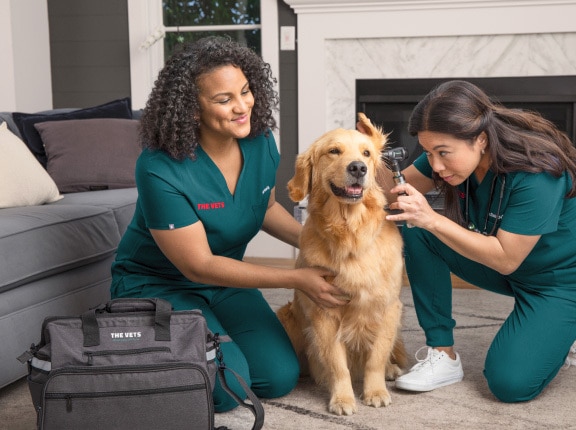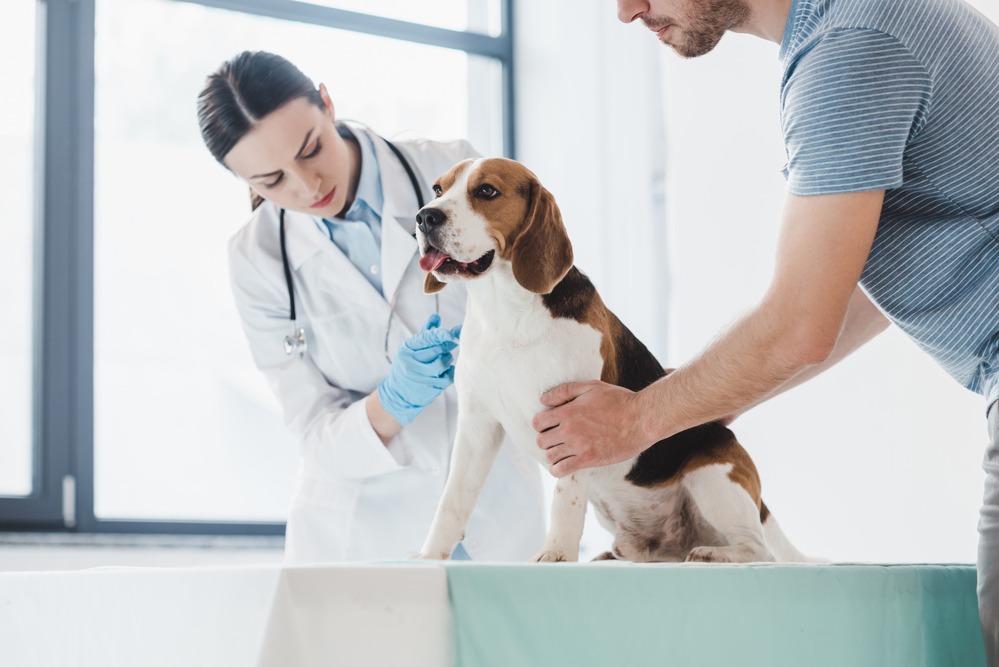Signs Your Dog Might Need canine tplo surgery: Vet-Approved Checklist
Signs Your Dog Might Need canine tplo surgery: Vet-Approved Checklist
Blog Article
All Concerning Veterinarian Surgery: Understanding the Relevance of Professional Look After Your Family pets
Vet surgical procedure is an essential part of family pet medical care. It includes different treatments, from regular elective surgeries to urgent interventions. Understanding the details of these surgical treatments can assist pet owners make educated decisions. The prep work, execution, and healing phases are necessary for making sure the well-being of pets. With appropriate understanding, proprietors can browse the intricacies of vet care. What aspects should be considered prior to an animal undertakes surgical procedure?
Types of Vet Surgeries
When a pet needs surgical intervention, understanding the different kinds of veterinarian surgical procedures can aid pet dog owners make educated choices. Vet surgeries can be extensively classified right into 3 main types: elective, urgent, and emergency situation surgical procedures. Optional surgical treatments, such as spaying or neutering, are planned treatments that are not quickly life-threatening. Urgent surgeries, like those for international body removal, need to be performed soon yet are not life-threatening in the minute. Emergency situation surgical treatments, such as those resolving extreme injury or interior blood loss, are important and require instant attention.Additionally, surgical procedures can differ in complexity, ranging from minimally invasive laparoscopic procedures to more comprehensive open surgical treatments. Each sort of surgical procedure carries its very own dangers and recovery processes. Comprehending these categories enables family pet owners to engage in meaningful discussions with vets, bring about far better end results for their beloved animals.
Getting ready for Your Pet dog's Surgical treatment
Planning for a pet dog's surgical treatment includes a complete checklist to guarantee all fundamentals are covered. Effective communication with the vet is important for understanding the treatment and any type of essential pre-operative steps - emergency vet bellingham. Additionally, having clear post-operative treatment guidelines will aid owners give the very best support for their recovering pet dogs
Pre-Surgery Checklist Fundamentals
Assuring a smooth surgical experience for a family pet calls for cautious prep work and focus to information. A pre-surgery list is crucial for pet owners to adhere to. Validating the set up surgery date and time is essential. Proprietors should additionally confirm that their pet dog has not eaten according to the vet's instructions, normally for 8-12 hours before surgery. Collecting essential clinical records, consisting of vaccination background, is necessary for the vet's review. It is likewise a good idea to prepare a comfy room in the house for the family pet's recuperation after surgery. Ultimately, proprietors need to have a plan for transport to and from the veterinary facility, making sure that the pet is safe and secure and comfy throughout the trip. Adhering to these actions can significantly improve the surgical experience.
Communicating With Your Veterinarian

Efficient communication with the vet is vital for a successful surgical experience for animals. Proprietors need to be prepared to review their pet's clinical history, consisting of any kind of pre-existing problems, medicines, and allergies. This info aids the veterinarian analyze risks and customize the medical plan accordingly. Additionally, pet dog owners ought to ask concerns concerning the procedure, anesthetic, and anticipated outcomes to guarantee they completely understand the process. Clearing up any type of questions can alleviate stress and anxiety for both the pet and the owner. It is also crucial to communicate any kind of behavioral adjustments or concerns observed in the pet dog leading up to the surgical treatment. Eventually, clear discussion promotes depend on and collaboration, making sure that pets receive the very best possible treatment throughout their medical journey.
Post-Operative Care Directions
After talking about the operation with the vet, pet dog proprietors ought to focus on post-operative care directions to promote a smooth recovery for their pet dogs. These instructions commonly include checking the medical site for signs of infection, such as inflammation or discharge. Family pets may require to be kept one's cool and constrained to avoid excessive activity that can interrupt healing. Discomfort management is crucial, so owners must comply with the veterinarian's assistance on carrying out medicines. Additionally, nutritional limitations might be encouraged to avoid gastrointestinal distress. Normal follow-up consultations are crucial to ensure correct recovery and address any issues. By adhering to these post-operative treatment instructions, pet owners can significantly add to their family pet's recuperation and general well-being.
The Surgical Process Explained
The surgery for pets encompasses essential actions that ensure their security and recovery. Pre-surgery preparations are vital for reducing dangers, while post-operative treatment standards play an essential function in promoting healing. Recognizing these parts helps pet proprietors browse the medical experience much more efficiently.
Pre-Surgery Preparations
Prior to a family pet goes through surgical procedure, a number of essential prep work should happen to ensure a secure and successful treatment. First, an extensive vet assessment is vital to analyze the family pet's overall wellness and recognize any type of potential dangers. This may include blood tests, imaging, or various other diagnostics. The vet will likewise review anesthesia alternatives tailored to the family pet's particular needs. Furthermore, pet proprietors are typically instructed to withhold food and water for a specified time prior to surgical treatment to lessen the threat of issues during anesthesia. It's important for owners to provide a full case history, consisting of any type of medications or allergies, guaranteeing the surgical group has all necessary details. Correct interaction and adherence to pre-surgery guidelines can substantially enhance the result of the treatment.
Post-Operative Care Guidelines
Proper post-operative care is essential for making certain a family pet's healing complying with surgical treatment. After the procedure, pets need to be monitored carefully for any kind of signs of difficulties, such as excessive bleeding, swelling, or unusual habits. It is necessary to adhere to the veterinarian's guidelines concerning medications, including discomfort reducers and antibiotics. Pets must be maintained in a quiet, comfortable atmosphere to decrease stress and anxiety and promote healing. Restricting task is vital; more info here short, leashed strolls may be necessary, but jumping or running should be stayed clear of. Regular follow-up appointments should be set up to evaluate the recovery process. Furthermore, the surgical site has to be maintained clean and dry, with any type of indications of infection reported to a vet immediately. Abiding by these standards improves healing outcomes.
Anesthesia and Discomfort Administration
Effective anesthetic and pain monitoring are essential elements of vet surgical treatment, making sure that pets stay comfy and safe throughout the procedure. Vets examine each pet's individual demands, taking right into account factors such as age, weight, wellness status, and the kind of surgical procedure being performed.Anesthesia methods typically consist of a mix of pre-anesthetic medicines, induction representatives, and inhalant anesthetics, permitting exact control over the animal's level of awareness. Tracking throughout surgical treatment is vital; veterinarians constantly observe vital signs to attend to any prospective difficulties promptly.Pain management techniques might involve opioids, non-steroidal anti-inflammatory drugs (NSAIDs), and anesthetics, customized to the animal's details circumstance. This complex method helps reduce discomfort and advertises a smoother surgical experience. By prioritizing reliable anesthesia and discomfort administration, veterinary experts enhance the total welfare of animals going through surgical procedures, ensuring they get the greatest requirement of treatment.
Post-Operative Treatment and Recovery
Following surgery, the focus shifts to post-operative treatment and healing, which is important for ensuring a pet dog's secure go back to regular tasks. Throughout this duration, animals need a quiet, comfortable environment to help recovery. Owners must closely check their animals for any kind of signs of pain or uncommon behavior.Veterinary standards typically include details instructions associated with drug administration, injury treatment, and dietary adjustments. It is vital to comply with these recommendations to decrease complications and promote healing. Pets may require to be limited from strenuous tasks, such as running or leaping, throughout their healing period (tplo surgery).Regular follow-up visits with the veterinarian enable for monitoring of the pet's progression and timely changes to the treatment plan. Giving psychological support and companionship can likewise enhance a family pet's healing experience, aiding to alleviate stress and anxiety. In general, persistent post-operative care plays a substantial function in attaining an effective healing
Acknowledging Difficulties After Surgical Procedure
Just how can pet owners recognize problems after surgery? Awareness of details signs is essential for making sure the health of pets during healing. Usual signs consist of excessive swelling, inflammation, or discharge at the surgical website, which may represent infection. Additionally, persistent discomfort, indicated by yawping or reluctance to relocate, should motivate instant interest. Changes in hunger or water consumption can also suggest difficulties; a decrease in these habits may find a vet signify pain or distress.Moreover, animal owners must monitor their family pets for any kind of uncommon actions, such as sleepiness or problem breathing, as these can be indicators of serious concerns. Vomiting or diarrhea complying with surgery may need immediate vet examination. Acknowledging these issues early can substantially affect a pet dog's recuperation procedure, highlighting the value of caution and timely communication with a vet for any type of concerning signs and symptoms.
The Function of Vet Professionals in Surgical Care
Veterinary professionals play a vital duty in ensuring the safety and success of medical procedures for animals, especially complying with surgical procedure when checking and care are vital. These specialists consist of veterinarians, veterinary technicians, and support team, all of whom contribute specialized skills to the surgical process.Before surgery, vets conduct thorough analyses to assess the family pet's health, guaranteeing that any kind of sites underlying conditions are handled. Throughout the procedure, the surgical team gives anesthetic, maintains clean and sterile atmospheres, and keeps track of essential signs, all crucial for lessening risks.Post-operative treatment is similarly significant; veterinary experts observe for issues, manage discomfort, and overview proprietors on healing practices. Their proficiency enables them to recognize early signs of distress or infection, making certain prompt treatment. Inevitably, the collective initiatives of vet specialists in surgical care foster a secure atmosphere, advertising the health of pet dogs throughout the surgical journey.

Often Asked Questions
How Do I Pick the Right Veterinary Cosmetic Surgeon for My Pet dog?
Selecting the appropriate vet specialist involves researching qualifications, reading testimonials, and assessing the center's setting. It is important to assess the cosmetic surgeon's experience with specific procedures and their communication style when deciding.
What Prevail Misconceptions Concerning Vet Surgeries?
Usual misunderstandings about vet surgeries consist of ideas that they are always dangerous, unneeded, or just for emergency situations. Numerous animal proprietors take too lightly the benefits of preventative treatments and the ability involved in veterinary medical care.
Just How Much Will My Pet's Surgery Price?
The expense of an animal's surgical procedure can differ significantly based on variables such as the kind of treatment, the vet's experience, and geographical location (24 hour vet near me). Generally, costs range from a few hundred to numerous thousand dollars

Can My Pet Consume Before Surgery?
Before surgical procedure, it is normally encouraged that pet dogs avoid consuming for a details duration. This fasting assists minimize the threat of complications during anesthesia. Owners need to consult their vet for specific guidelines customized to their animal's requirements.
What if My Family Pet Has Pre-Existing Health Conditions?
When a family pet has pre-existing health and wellness conditions, it's important for the veterinarian to evaluate these variables before surgical treatment. This examination warranties proper precautions are taken, reducing threats and maximizing the pet dog's general security throughout the procedure.
Report this page